MARKET OVERVIEW:
Global Rechargeable Zinc Battery market is estimated to reach $195.1 Million by 2031; growing at a CAGR of 6.2% from 2024 to 2031.
The Global Rechargeable Zinc Battery market has emerged as a dynamic and rapidly growing sector within the energy storage industry. Focused on the development, manufacturing, and application of rechargeable zinc-based batteries, this market offers a versatile and sustainable alternative to traditional energy storage solutions. With a rising emphasis on environmental sustainability, there is a growing demand for energy-efficient and eco-friendly technologies, placing zinc batteries in the spotlight. Leveraging the abundance, recyclability, and safety of zinc, these batteries are proving to be a promising solution for energy storage needs across various applications. In contrast to lithium-ion batteries, zinc-based batteries present significant advantages, operating on a different chemistry and utilizing more environmentally friendly electrolytes. Positioned as an important player in addressing critical energy challenges, the Global Rechargeable Zinc Battery market is set to witness advancements in energy density, cycle life, and scalability to meet diverse demands. From consumer electronics to renewable energy storage systems, grid-scale storage, electric vehicles, and off-grid solutions, the applications of rechargeable zinc batteries span a wide range of sectors. With a focus on safety, sustainability, and cost-effectiveness, these batteries are poised to play a pivotal role in the global shift towards cleaner and more secure energy supply chains. As research and development efforts continue to enhance performance and overcome limitations, the industry is expected to benefit from supportive policies and incentives aimed at promoting green technology. Collaborations between technology developers, manufacturers, and end-users will drive the mass-scale deployment of zinc-based energy storage systems, solidifying the market's position in the future energy landscape. With a strong focus on innovation and sustainability, the Global Rechargeable Zinc Battery market is poised to lead the way in addressing energy challenges worldwide for years to come.
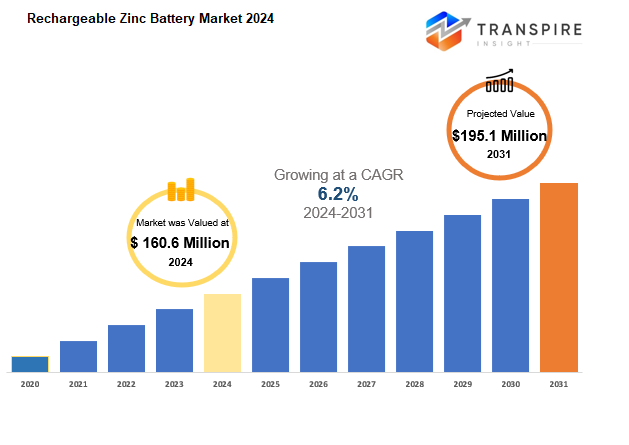
GROWTH FACTORS
The Global Rechargeable Zinc Battery market is poised for significant growth driven by the convergence of emerging technologies, shifting energy demands, and environmental considerations. The rise of renewable energy sources like solar and wind power necessitates efficient and long-lasting energy storage solutions, making rechargeable zinc batteries a preferred choice. Moreover, the expanding electric and hybrid vehicle markets are further fueling the demand for cost-effective and dependable battery technologies, with zinc-based solutions increasingly becoming the preferred option.
Despite the promising outlook, certain challenges may impede the market's growth trajectory. Chief among these obstacles is the high initial manufacturing costs associated with rechargeable zinc batteries, making them less competitive against established alternatives like nickel-cadmium or lead-acid batteries. Additionally, the lack of standardization in the industry could hinder compatibility with charging equipment, potentially limiting adoption rates. However, advancements in zinc battery technology are paving the way for grid-scale energy storage systems, offering a promising solution to the world's evolving energy storage needs in an environmentally conscious manner.
In the coming years, the Global Rechargeable Zinc Battery market is expected to play a pivotal role in addressing the increasing energy challenges faced by the global population. Technological advancements are projected to drive down manufacturing costs, enhancing the competitive position of zinc batteries in the energy storage sector. With a focus on standardization and compatibility, barriers to adoption are likely to diminish, enabling zinc batteries to be utilized across a wide range of applications. As the market continues to develop, the emphasis on sustainability and energy efficiency is anticipated to drive further growth, positioning rechargeable zinc batteries as a key player in cleaner, longer-lasting storage solutions for renewable energy systems and electric vehicles. The immense potential of the Global Rechargeable Zinc Battery market could revolutionize the energy storage landscape, ushering in a new era of cleaner and more efficient energy utilization in the near future.
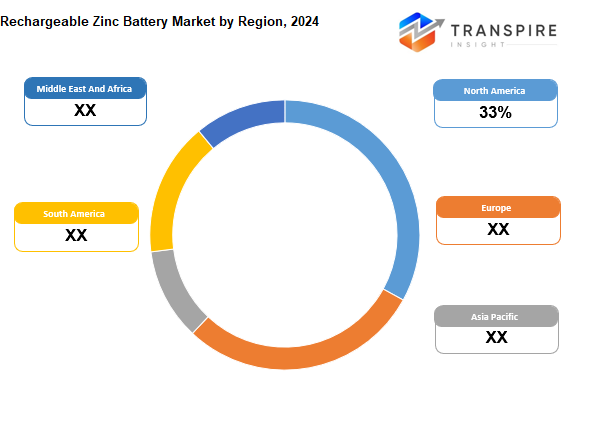
MARKET SEGMENTATION
By Battery Type
The global rechargeable zinc battery market is poised for significant growth as the focus on earth-friendly and efficient energy solutions continues to increase. Rechargeable zinc batteries, known for their affordability, safety, and environmental benefits, are emerging as viable alternatives to traditional battery technologies. Researchers are developing various types of zinc-based batteries to cater to different needs, such as electric vehicles, renewable energy integration, and portable electronics. Zinc-air batteries, with their high energy density and use of oxygen from the air, are particularly notable for applications like hearing aids, medical devices, and new electric vehicle designs. However, efforts are ongoing to improve their rechargeability limitations. Zinc-ion batteries, on the other hand, are gaining traction due to their use of water-based electrolytes, which greatly enhance safety and make them ideal for stationary energy storage systems like solar or wind power installations. Zinc-bromine flow batteries offer unmatched advantages for large-scale energy storage, thanks to their liquid electrolyte solution that allows for scalability and extended lifespans. These batteries are well-suited for grid-level energy storage, ensuring power supply stability during peak or intermittent renewable energy generation. The cost-effectiveness and efficiency of zinc-bromine flow batteries are expected to improve with technological advancements, leading to widespread adoption. Zinc-manganese dioxide cells, known for their simplicity and economic feasibility, are commonly used in consumer electronics and are now being considered for broader applications as advanced materials enhance their performance and durability. With ongoing technological advancements, the future of the global rechargeable zinc battery market looks promising as these batteries are set to play a vital role in reshaping energy storage and usage in the coming years.
By Component
The applications of Global Rechargeable Zinc Battery have promising prospects, with the need for sustainable energy solutions increasing for a prosperous future. These rechargeable zinc batteries offer competitive advantages over traditional battery technologies due to their environmental friendliness, safety, and cost-effectiveness. Their unique features make them ideal for a wide range of applications, from consumer electronics to large energy storage systems. As the world transitions towards greener energy practices, these batteries are expected to play a crucial role in meeting the growing energy demands.
The market for rechargeable zinc batteries is composed of key components such as the electrolyte, electrode, separator, and battery casing, all working together to ensure optimal functionality and performance. Innovations in electrolyte composition and electrode materials are driving efficiency improvements and extending the lifespan of these batteries. Enhancements in separator technology are enhancing safety and reliability, while advancements in battery casing design are providing better protection for all components. The future of Global Rechargeable Zinc Battery will see increased investment in research and development, alongside supportive government policies aimed at reducing carbon emissions. These batteries will play a vital role in backing up renewable energy sources like solar and wind power, contributing to efficient energy storage systems and supporting the transition towards cleaner energy alternatives.
By Application
The Global Rechargeable Zinc Battery is rapidly emerging as a key player in the advancement of energy solutions worldwide. With its potential to revolutionize the storage and consumption of energy, particularly in areas of sustainability, reliability, and efficiency, it is becoming a preferred alternative to traditional lithium-ion batteries. The cost-effectiveness, abundance of raw materials, and safety benefits, including reduced risks of overheating and fire hazard, make rechargeable zinc batteries a compelling option for various industries.
The application of rechargeable zinc batteries spans across multiple sectors, offering longer-lasting and safer energy solutions. In consumer electronics, these batteries provide affordable and reliable power for extended durations. The rising demand for environmentally friendly and longer-lasting battery systems, driven by the popularity of electric vehicles, positions zinc-based batteries as an ideal choice for powering devices such as smartphones and laptops. Additionally, the compatibility of rechargeable zinc batteries with renewable energy sources like solar and wind power makes them a sustainable option for energy storage systems, both grid-based and off-grid. The versatility of zinc batteries in industries such as medical, military, and defense further underscores their importance in providing consistent, reliable power for critical equipment, even in challenging environments. As advancements in manufacturing techniques and material science continue to enhance the performance and lifespan of zinc batteries, they are poised to play a pivotal role in the electrification of industrial equipment and the overall energy landscape, promoting sustainability and efficiency across various applications and industries.
By End-User
The Global Rechargeable Zinc Battery market is experiencing a notable upsurge driven by technological advancements and a growing focus on sustainability in the energy storage sector. This market is witnessing increased demand for energy solutions that are not only cost-effective but also safe and eco-friendly, impacting sectors ranging from residential to industrial and utility applications. Rechargeable zinc batteries distinguish themselves from traditional battery types due to their non-toxic nature, recyclability, and resistance to thermal runaway, making them an attractive option as the world transitions towards cleaner energy alternatives. Their versatility allows them to meet the diverse needs of different user segments, positioning them as a promising solution in the evolving energy landscape.
In the residential sector, the adoption of rechargeable zinc batteries is expected to gain momentum as homeowners seek to harness renewable energy sources like solar power. These batteries offer an economical and reliable energy storage solution, enabling efficient utilization of energy generated during the day for nighttime use. For homeowners looking to reduce reliance on conventional energy grids, rechargeable zinc batteries present a compelling option for the future. In the commercial and industrial realms, businesses are under increasing pressure to reduce carbon emissions and embrace sustainable practices. Rechargeable zinc batteries can be scaled up to provide effective energy management in critical situations, offering long-lasting durability and reliable performance across various conditions. This makes them ideal for powering equipment, optimizing fossil fuel consumption, and ensuring smooth operations in energy-intensive facilities. Additionally, utility applications represent a significant area for the Global Rechargeable Zinc Battery market, as energy grids worldwide transition towards integrating renewable sources like wind and solar power. The ability of rechargeable zinc batteries to store large amounts of energy for on-demand release plays a crucial role in grid stabilization and outage prevention, highlighting their importance in enhancing energy reliability and sustainability. Looking ahead, the market for rechargeable zinc batteries holds immense potential for innovation, with ongoing efforts to enhance battery performance, lifespan, and cost-efficiency. As governments and organizations prioritize energy sustainability, the demand for rechargeable zinc batteries is expected to increase, solidifying their position as a cornerstone of the global energy storage ecosystem. With expanding applications across diverse user groups, rechargeable zinc batteries offer promising solutions to address energy challenges in an increasingly electrified and environmentally conscious world.
REGIONAL ANALYSIS
The market for global rechargeable zinc batteries is emerging as a promising solution for future energy storage needs. Offering an environmentally safe alternative to traditional batteries, rechargeable zinc batteries are efficient, cost-effective, and safe, making them suitable for a wide range of applications from consumer electronics to large-scale renewable energy storage systems. With the increasing focus on sustainable energy practices due to climate change concerns, this market holds significant potential for growth.
Geographical diversity plays a crucial role in the expansion of the global rechargeable zinc battery market. Countries in North America, particularly the U.S. and Canada, are showing a strong demand for these batteries, driven by their emphasis on clean energy and advanced technology integration. In Europe, countries like the UK, Germany, France, and Italy are also keen on utilizing rechargeable zinc batteries given their sustainable practices and infrastructural development. Meanwhile, Asia-Pacific countries such as China, India, Japan, and South Korea are leading in manufacturing and technological advancements, making the region highly feasible for rechargeable zinc batteries. South America, the Middle East, and Africa are also gradually integrating these batteries into their energy solutions, highlighting the global potential for this transformative market.
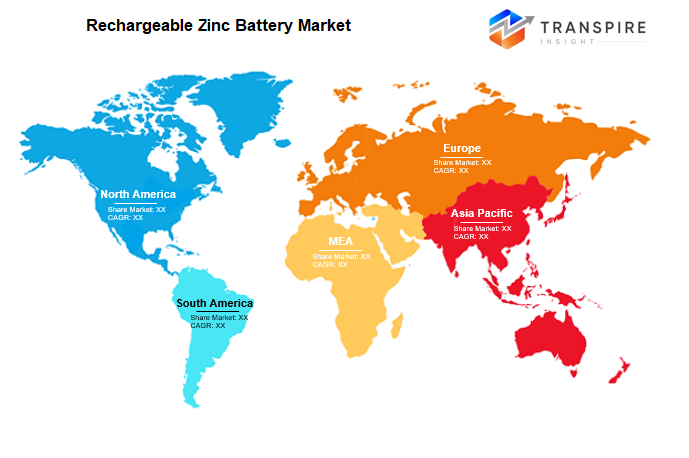
KEY INDUSTRY PLAYERS
The Global Rechargeable Zinc Battery market is experiencing rapid growth within the energy storage industry due to the increasing demand for sustainable energy solutions worldwide. Zinc-based rechargeable batteries, a newer entrant in the market, offer numerous advantages over traditional lithium-ion batteries. They are known for their safety, cost-effectiveness in manufacturing, and eco-friendliness, positioning them as a promising alternative. As the push for innovation intensifies, key market players like ZPower LLC, NantEnergy Inc., and Urban Electric Power are actively working on developing and refining zinc battery technologies to meet the evolving energy storage requirements of the future.
Renowned companies in the sector, such as Panasonic Corporation, PowerGenix, and ZincFive, Inc., are actively engaged in enhancing zinc battery technology to stay competitive in the market. The rising global focus on renewable energy sources, coupled with the need for efficient energy storage systems, is aligning the Global Rechargeable Zinc Battery market with the ongoing trend towards electrification. This shift positions zinc batteries as a crucial component in addressing energy challenges and advancing solutions for transportation electrification, including electric vehicles and micro-mobility options. Collaborative efforts between manufacturers, researchers, and policymakers will be vital as the market for Global Rechargeable Zinc Batteries continues to evolve, driving advancements in sustainable energy solutions.
REPORT SCOPE AND SEGMENTATION
|
Attributes |
Details |
|
Market Size By 2031 |
USD 195.1 Million |
|
Growth Rate |
CAGR of 6.2% |
|
Forecast period |
2024 - 2031 |
|
Report Pages |
250+ |
|
By Battery Type |
|
|
By Component |
|
|
By Application |
|
|
By End User |
|
|
By Region |
|
|
Key Market Players |
|



_page-000155.jpg)
_page-000154.jpg)
_page-000153.jpg)
_page-000152.jpg)

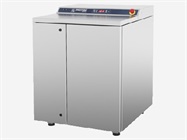
6.jpg)
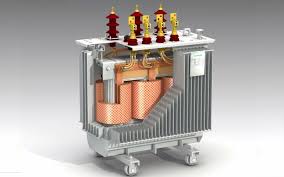


 APAC:+91 7666513636
APAC:+91 7666513636





